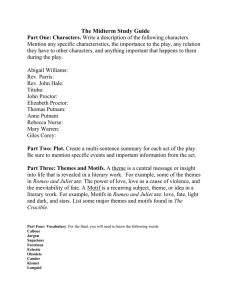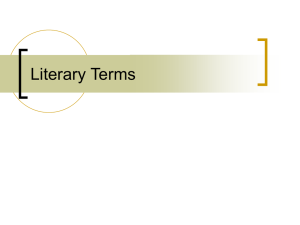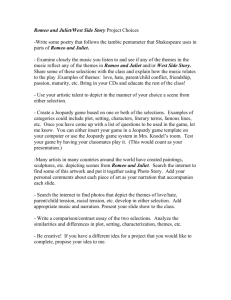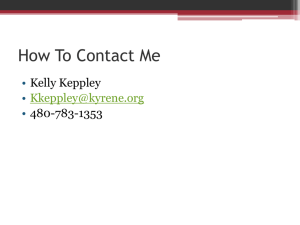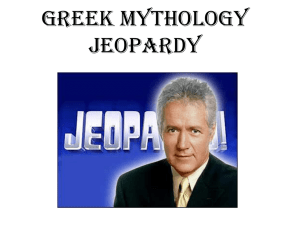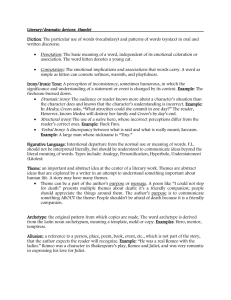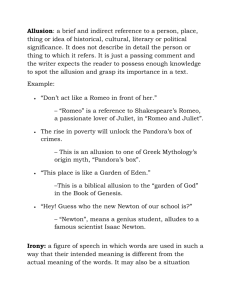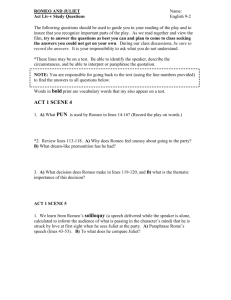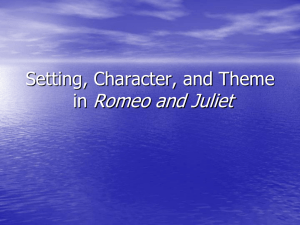Romeo and Juliet Focus Points
advertisement
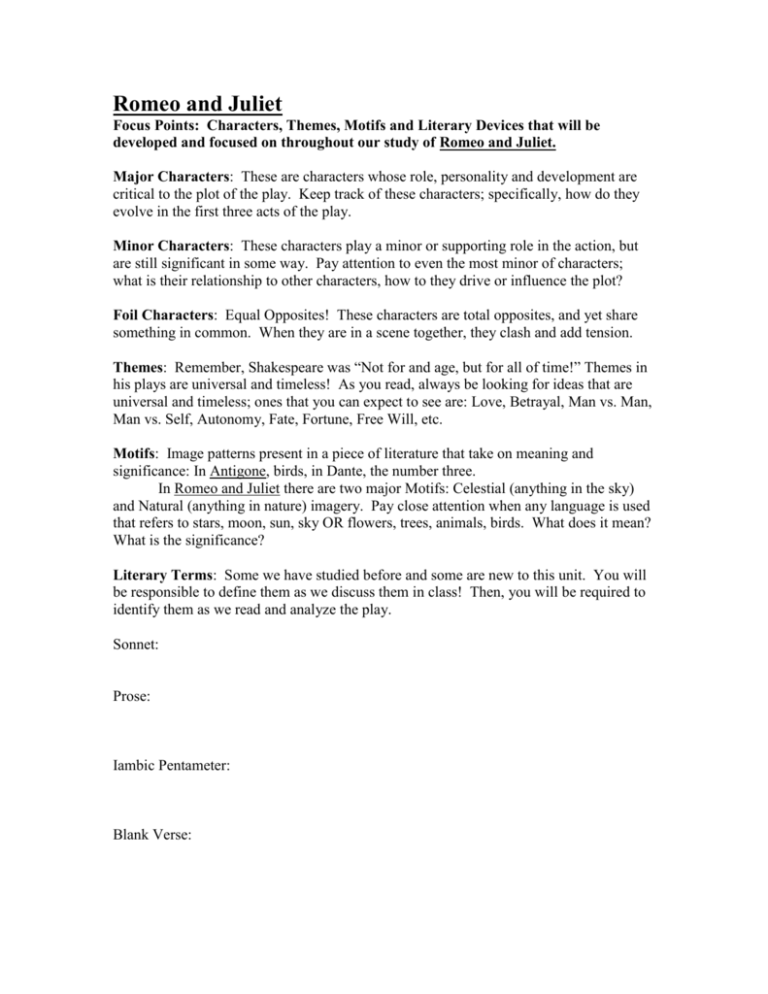
Romeo and Juliet Focus Points: Characters, Themes, Motifs and Literary Devices that will be developed and focused on throughout our study of Romeo and Juliet. Major Characters: These are characters whose role, personality and development are critical to the plot of the play. Keep track of these characters; specifically, how do they evolve in the first three acts of the play. Minor Characters: These characters play a minor or supporting role in the action, but are still significant in some way. Pay attention to even the most minor of characters; what is their relationship to other characters, how to they drive or influence the plot? Foil Characters: Equal Opposites! These characters are total opposites, and yet share something in common. When they are in a scene together, they clash and add tension. Themes: Remember, Shakespeare was “Not for and age, but for all of time!” Themes in his plays are universal and timeless! As you read, always be looking for ideas that are universal and timeless; ones that you can expect to see are: Love, Betrayal, Man vs. Man, Man vs. Self, Autonomy, Fate, Fortune, Free Will, etc. Motifs: Image patterns present in a piece of literature that take on meaning and significance: In Antigone, birds, in Dante, the number three. In Romeo and Juliet there are two major Motifs: Celestial (anything in the sky) and Natural (anything in nature) imagery. Pay close attention when any language is used that refers to stars, moon, sun, sky OR flowers, trees, animals, birds. What does it mean? What is the significance? Literary Terms: Some we have studied before and some are new to this unit. You will be responsible to define them as we discuss them in class! Then, you will be required to identify them as we read and analyze the play. Sonnet: Prose: Iambic Pentameter: Blank Verse: Simile: Metaphor: Personification: Dramatic Irony: Verbal Irony: Hyperbole: Oxymoron: Pun: Comic Relief: Confidante: Monologue: Soliloquy: Aside:
